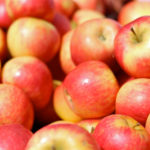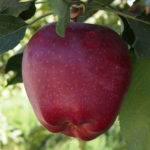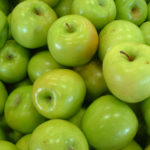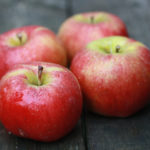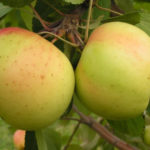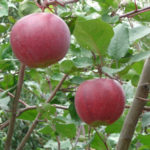Apple variety Red Delicious
The Red Delicious apple tree has a rather interesting fate. The culture is over 100 years old. And at one time, the variety was incredibly popular in the United States, and not only there. In a fairly short time, he gained worldwide fame. It was even included in the State Register of Breeding Achievements of Russia in the North Caucasus region. True, after some time the variety was removed from registration, but this was most likely due to the fact that the license expired, and they did not renew it. Nevertheless, in Russia this apple tree is known and loved. At home and in some European countries, for example in Poland, the variety is grown on an industrial scale. In addition, she is quite rich in clones. In the USA, 42 clones have been patented, which differ in the best taste, as a result of which interest in our heroine began to fade. But the thick skin, low cost and good appearance of apples make this variety an ideal export option. Currently, most of the harvested Red Delicious harvest is sent to India, Saudi Arabia, the United Arab Emirates, Indonesia, Mexico and more than two dozen countries.
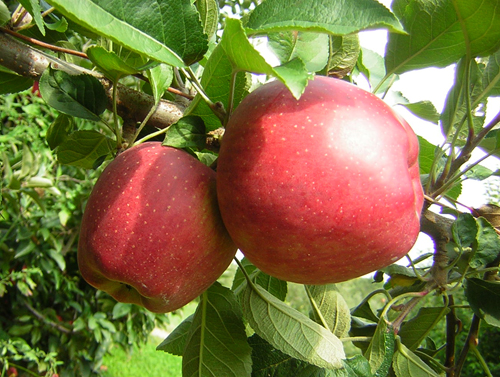
History of origin
In 1870, apple farmer Jesse Hiatt, who was cultivating apple trees in Iowa, discovered a young tree of an unknown variety in his garden. After an unsuccessful attempt to get rid of it, I let the tree grow, and it was right. When the time came to bear fruit, the apple tree presented the farmer with unusual fruits with red-yellow stripes and excellent taste. The farmer named the variety Hawkeye (Hawkeye) and in 1992 sent the crop to an apple competition, which was held by the Stark brothers' nursery in search of new products. After tasting the apple, the president of the company exclaimed: "God, this is delicious!", And thus named the new variety by the name Delicious, which in translation from English sounds like "very tasty" or "delicious". The enterprising Starks immediately bought the rights to the novelty, and they paid off. In the beginning, as an introduction, they offered the new product for free, and then, when the fame of an incredibly stable and productive tree spread throughout America, they were able to earn $ 12 million by 1922 from the sale of seedlings. On one of these seedlings, a branch soon grew, the fruits on which ripened earlier than the others, and had a more intense dark red color. It was this mutation that laid the foundation for a new variety, which got its name from the color - Red Delicious. The appearance of the fruit of the new variety was excellent. By 1975, the apple tree yielded almost 75% of the total harvest in Washington state.
Description
Our heroine is a medium-sized tree, about 4.5 meters high, although some specimens can reach 7 meters in height. A young tree is first decorated with an oval or back-pyramidal crown. Having entered the season of fruiting, the tree changes shape, the crown becomes rounded or broadly round, occupying about 3.0 - 5.0 meters in diameter. The branches forming it are medium-sized, with numerous rings of different ages, on which, in general, fruiting is concentrated. Shoots are medium, straight or slightly curved, covered with red-brown bark, strongly pubescent. The bark of the trunk and central branches is rough. The foliage is good. Red Delicious leaves of medium size, oblong-oval, green. The base of the leaf blade is rounded, the apex is moderately elongated, the surface is shiny, along the edge of the leaf there is a serrate-crenate serration. Anthocyanin stains the petiole completely, and the central vein up to half of the leaf. The flowers are five-petal, large, white, with a slight pink tint. Apple tree inflorescences consist of 3 - 5 flowers.
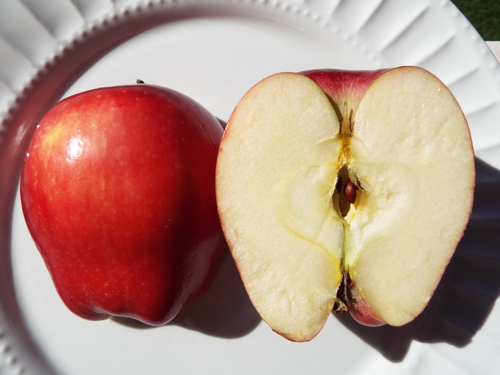
The fruits are very attractive, the conical shape gives them an almost perfect appearance. The funnel is deep, of medium width, and often remains light green in color.The saucer is of medium depth, not too wide, surrounded by five large tubercles, which are a kind of visiting card of the variety. The calyx is large, closed, the subasculum tube is conical. The seed nest is oblong, small. The seeds are dark brown. The skin is glossy, shiny, strong, one might even say rough. Red Delicious fruits differ from the main variety by an intense dark red blush that covers the entire surface. Subcutaneous points of medium size, light, well visible, often located on the surface. On the sunny side, the stalk is red in color. The pulp of the unripe apple tree is starchy and firm. As it matures, it becomes softer, but remains juicy and crispy. The taste is rather sweet, but there is no pronounced zest in it, so it can be called ordinary. In the conditions of the Krasnodar Territory, 100 grams of fresh pulp contains: dry matter 15.5%, sugars 9.5 - 11.8%, acids 0.38 - 0.65%, ascorbic acid 5.5 - 6.5 mg, P -active substances 130 mg. The apples are large, with an average weight of 200 grams.
Characteristics
- During the fruiting period, Red Delicious, grafted on a seed stock, begins at about 5 - 6 years. On a dwarf rootstock - a year earlier;
- in terms of ripening, the apple tree belongs to the winter. The harvest time comes in the second half of September. But in hot climates, fruits ripen earlier - at the end of August. There is a big problem with determining the degree of ripeness of the fruit, because the color corresponding to the variety appears quite early, when the apple is not yet fully ripe. Experienced gardeners know that the period of consumer ripeness begins 135 - 155 days after the period of intense flowering, and they try to focus on these indicators. But the surest sign of ripening is the falling of apples from a branch. Therefore, as soon as the fruits began to fall, it was time to harvest them. Well, the most reliable way to find out if the apple is ripe or not is to look at the color of the seeds. At the moment of full ripeness, they will be dark brown, in an unripe fruit - light;
- yield, according to some sources - 150 kg from one adult tree;
- immunity is high enough. There is resistance to powdery mildew and fire blight. But the apple tree can suffer from scab to a large extent;

- The crop is self-fertile, and pollinators with a suitable flowering time are needed for it to perform at its best. For our hero, these are: Gala, Golden Delicious, Gloucester, Idared... If there is not enough space in the garden for planting the required variety, its branch can be grafted into the crown of Red Delicious;
- according to the description of VNIISPK, trees have an average winter hardiness. But as American gardeners note, plants get along well in zones 4 to 7 on the USDA frost resistance scale. This corresponds to winter temperatures from -15 ° C to -34.4 ° C;
- the apple tree can suffer from drought, so soil moisture must always be kept under control;
- gardeners often complain of uneven fruit. In order for all apples to be the same size, with a large number of ovaries, rationing must be carried out;
- the variety has excellent transportability, it is not without reason that it is the leader in export. Even after a 20-day transportation period, when storage norms are not met, Red Delicious fruits look flawless. Strong skin perfectly protects them from mechanical damage;
- keeping quality is very good. Subject to storage standards, the consumption period can last until April. In America, this particular variety, along with bananas, is most often offered in schools and hospitals. But there are complaints that apples often suffer from bitter spotting during storage;
- the way of use is universal.Fruit is consumed in its natural form, although many advise to remove the skin before that, which may seem rough. The harvest is processed into jam, jam, used as a filling for baking, desserts are prepared.
Planting and leaving
You can plant Red Delicious seedlings in spring and autumn. The distance to neighboring crops should be at least 4 - 5 meters. For the apple tree, you need to find the most illuminated place, since in the shade the color of the fruit may not be intense enough. The plant must be illuminated for at least 6 hours during the growing season. The culture is not picky about soils. But a good result will show only on loose and nutritious loams. But it is worth avoiding lowlands, which are often flooded, and where cold air accumulates. It is recommended to fill the planting pit with rotted manure or compost. During the first growing season, the seedling needs to be watered frequently, almost every week. To prevent moisture from evaporating quickly, the trunk circle is mulched, for example, with dry grass. During watering, make sure that moisture does not get on the trunk. About 3 dressings are carried out per season. The crown of this variety is given a sparse-tiered shape. Then, in early spring, before the start of sap flow, the crown is thinned out, if necessary, sanitary pruning is carried out. The trunk circle is kept clean, weeding will help fight weeds, and periodic loosening will support air exchange in the soil.
Red Delicious has perhaps the most recognizable fruits. The plant is deservedly respected by our gardeners. Yes, sometimes it gets sick, but next year it quickly recovers and bears fruit with amazingly beautiful apples. Maybe someone is not satisfied with the taste, but this small minus is more than offset by high yields and ease of cultivation. In addition, if the fruit is ripe on a tree in good light, then the taste will certainly delight. Thanks to the dense skin, fresh fruits will be stored until spring. In addition, the variety is very prolific for mutations, so take a closer look at your apple tree, it is possible that a new variety will appear on it.
